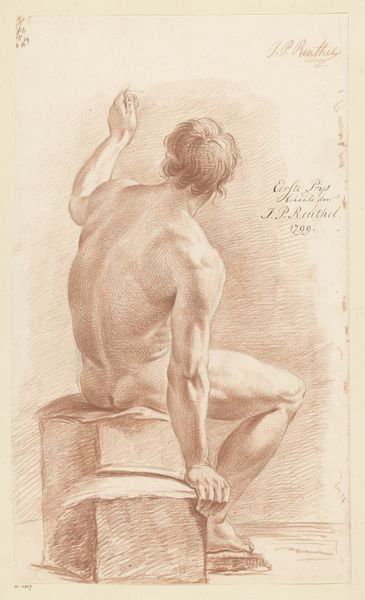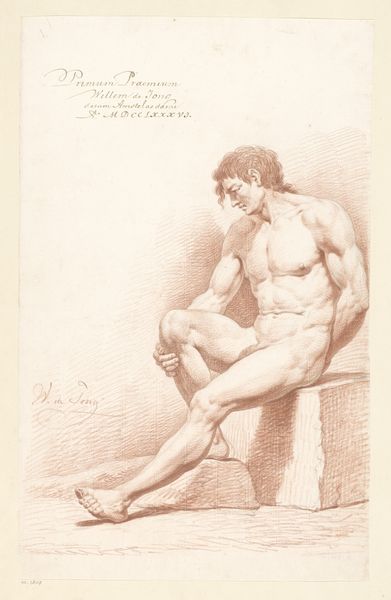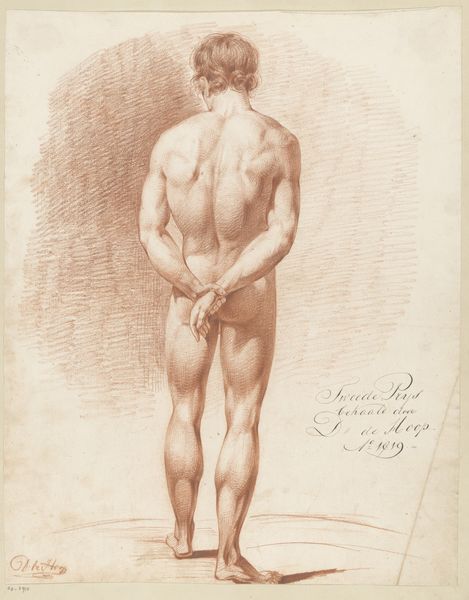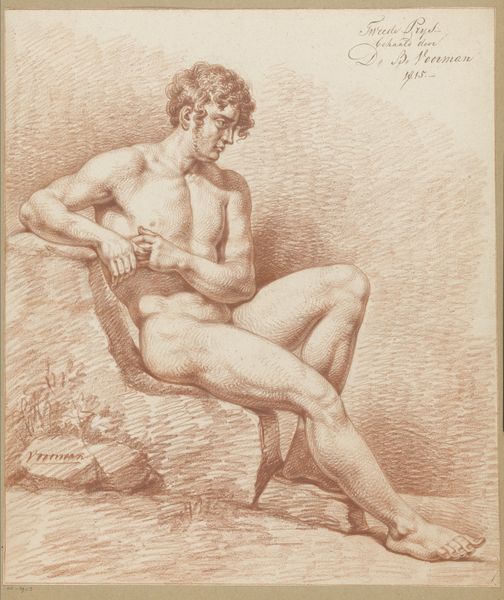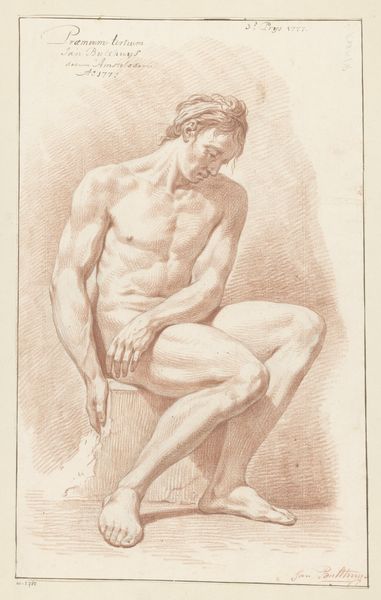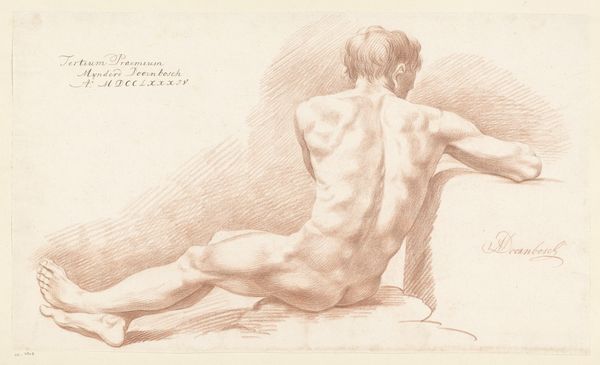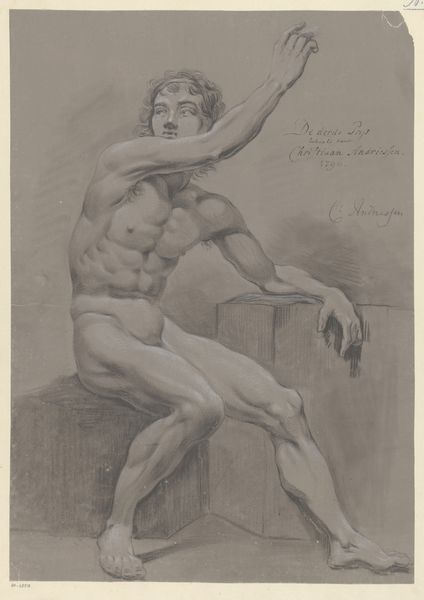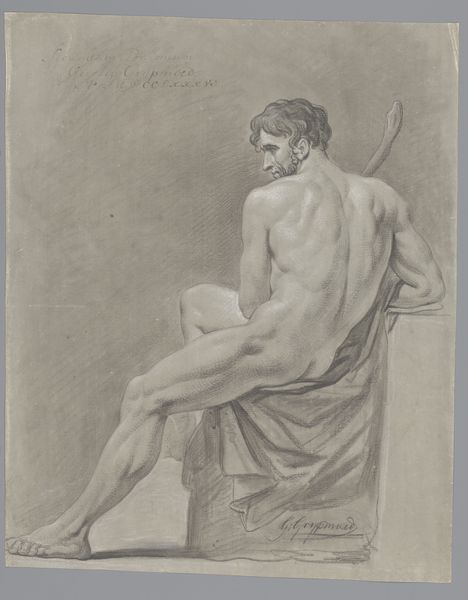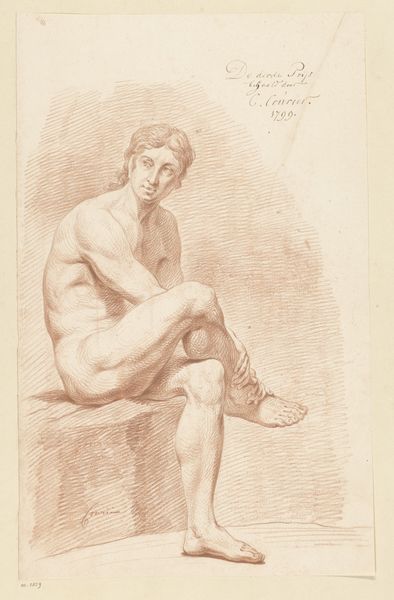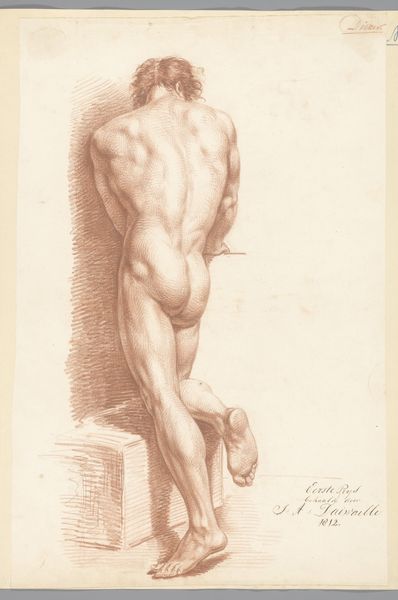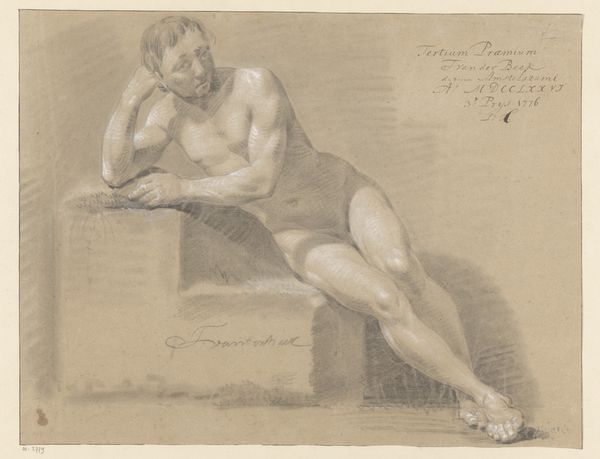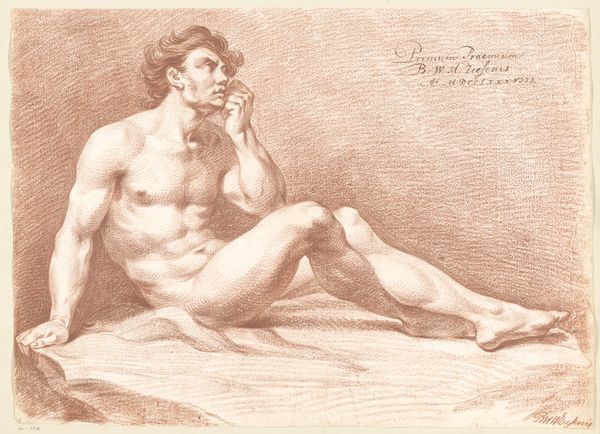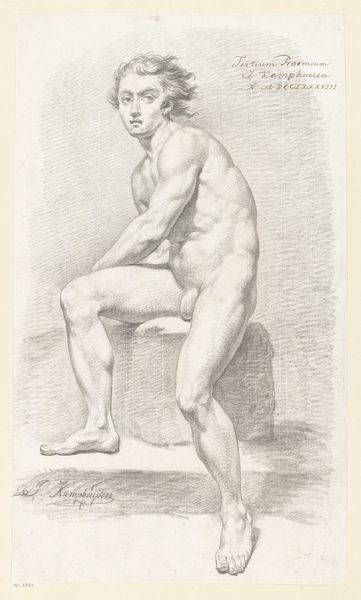
Zittend mannelijk naakt, van opzij gezien (2e prijs 1780) Possibly 1780 - 1783
0:00
0:00
drawing, pencil
#
portrait
#
drawing
#
pencil sketch
#
classical-realism
#
figuration
#
pencil drawing
#
pencil
#
line
#
portrait drawing
#
history-painting
#
northern-renaissance
#
academic-art
#
nude
Dimensions: height 417 mm, width 323 mm
Copyright: Rijks Museum: Open Domain
Curator: Here we have Jan Bulthuis's pencil drawing, "Zittend mannelijk naakt, van opzij gezien (2e prijs 1780)," created sometime between 1780 and 1783. It is currently held in the collection of the Rijksmuseum. Editor: My first impression is of calm, almost melancholy. The figure's pose and the monochromatic rendering create a feeling of introspection. He looks more weary than heroic, and yet his mastery is plain. Curator: Indeed. As the title indicates, this study of a seated male nude won second prize in 1780. Works like these were often created as academic exercises. Drawing the nude male form, from life or plaster casts, was a key component of artistic training. The prizes encouraged students to perfect their abilities. Editor: The paper's tone really gives this drawing warmth. Considering the means of its production is crucial – imagine the labor involved in charcoal or pencil making at this time. Each mark is considered, deliberate; you can almost see the artist at work, trying to capture form, and shadow, volume. Curator: And beyond technique, consider the social implications. Art academies played a critical role in shaping artistic taste and maintaining social hierarchies. Winning such a prize meant a great deal for a young artist's future. Editor: But I am more intrigued by his stance. The very posture implies labor and material being. The block he rests on seems like something you might find in a builder's yard more than any mythological throne. The emphasis is very firmly on the physical. Curator: Yes, it speaks volumes, not just about art training, but about the societal expectations placed on artists during that time, which stressed precision and idealization over individual expression. We see here a clear drive to create a convincing rendering. Editor: For me, it's the labor. Looking at the materials and method reminds us of art as skill and construction—not just beauty and lofty ideals. We are looking at someone studying a real thing that exists. Curator: So, when you look at this drawing, don’t just see a nude, think about the artistic establishment in the 1780s that it reflects and how the image would have been received and circulated within artistic circles at the time. Editor: Absolutely! And perhaps we can both agree that seeing how the raw elements, paper, pencil and a human body can produce this level of artistry offers profound insights.
Comments
No comments
Be the first to comment and join the conversation on the ultimate creative platform.
